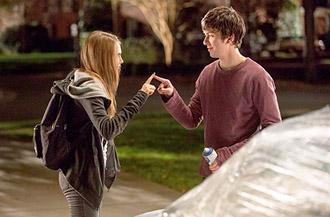|
|
Book vs. Movie: Paper TownsBy Ben GruchowAugust 10, 2015
The Verdict Both the book and movie here ultimately play in a very low-stakes universe, and that makes both of them more trifling and forgettable than a story about a missing high schooler and questions of sanity and mental health set against the backdrop of senior-year social norms ideally would be. The movie provides lower stakes than the book does by virtue of its backgrounding of the central mystery and character intimacy. It proceeds much more as a shallow high-school comedy, with no real weight or significance except for what the viewer chooses to infer based on their knowledge of the source material. As an attempt to address this, the subtext and theme is jammed in diegetically, toward the end. It works, just barely, but it highlights a core problem with the movie’s narrative: it doesn’t really flow. We are introduced to Quentin and Margo, given the beginnings of a storyline, and then another one takes over involving different characters and priorities; this is given just enough time to gather some steam before the original story wanders back in to be resolved. The other liability is that the movie, for most of its runtime, has us face-to-face with Nat Wolff’s Quentin - or, more specifically, Nat Wolff’s dead-eyed impersonation of a teenager named Quentin.
|

|
|
|

|
Friday, November 1, 2024
© 2024 Box Office Prophets, a division of One Of Us, Inc.


